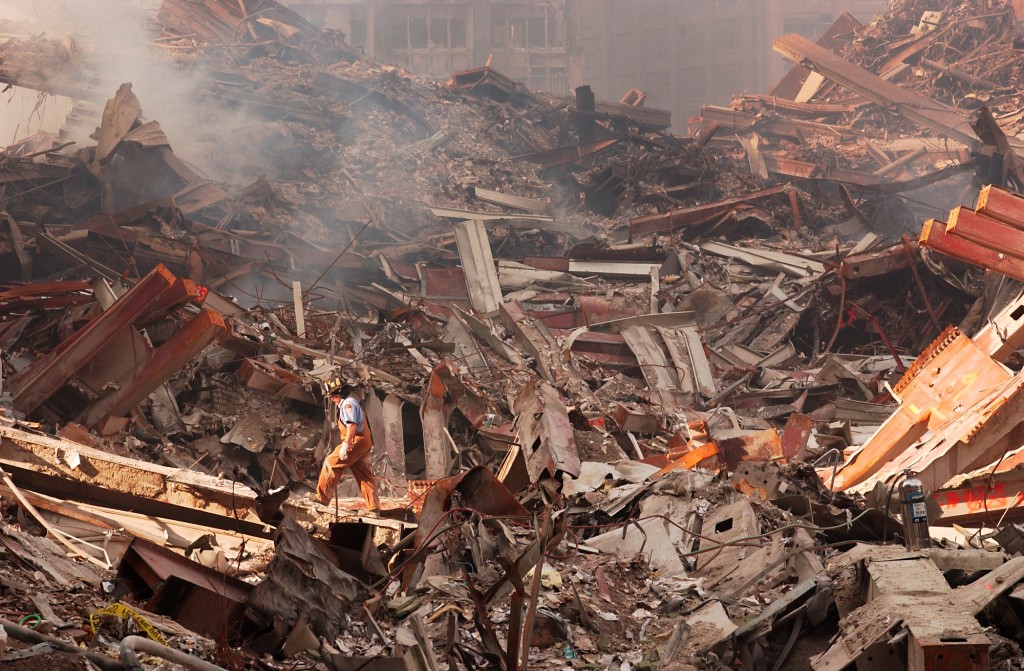마르코 폴로는 1254년경 이탈리아의 상업도시 베네치아에서 무역상의 아들로 태어났다. 그의 아버지 니콜로 폴로는 그가 태어날 때 중앙아시아의 있었으며, 그가 15세 때 돌아왔다. 마르코 폴로의 아버지 니콜로와 삼촌인 마페오는 무역업을 하고 있었는데~ 마르코가 6살때 동방무역을 떠났다가 당시 몽골의 황제 쿠빌라이칸의 로마 가톨릭 교황 클레멘스 4세에게 성유와 기독교와 서양지식을 잘아는 사람 100명을 부탁하는 특사 임무를 맡고 9년후에 베네치아로 돌아오게 된다. 2년후 성유와 수도사2명을 데리고 쿠빌라이칸의 특사임무를 완수하러 17살인 청년 마르코도 폴로 형제 일행으로 같이 따라가게 된다.
마르코 폴로 일행은 무장한 상인들로 이뤄진 대상행렬과 합류하며 터키를 지나 지금의 이란, 페르시아로 들어간다. 이때 수도사들은 너무 힘든 여정때문에 빠지게 되고 마르코 일행 셋은 페르시아의 타브리즈를 거쳐 항구도시 호르무즈에 도착해서 인도로 떠날 배편을 알아본다. 하지만 선박상태가 형편없어 뱃길대신 육로로 여행을 계속한다. 북쪽의 케르만까지 갔다가 낙타를 타고 공허의 사막 다슈텔루트를 지난다. 이때 모래폭풍과 도적떼의 위험에서 무사히 살아나고,, 아프카니스탄에 도착. 실크로드를 따라 파미르고원을 지나 카슈가르,험난한 타클라마칸 사막을 가까스로 지나~ 중국도시에 도착, 쿠빌라이 칸이 보낸 신하를 따라 여름 수도 상도에 도착하기까지 삼년 반이라는 시간이 걸렸다.1275년 원나라의 세조가 있던 카이펑에 간 이유는 당시 서방과의 교류를 원하고 있었던 쿠빌라이 칸으로서는 기독교를 이해할 필요가 있었다. 하지만 같이 여행을 시작한 도미니코 수도히 수사들은 모두 돌아가, 성유만 갖고 황제를 알현하게 되었다.
그곳에서 세조의 신임을 얻은 그는 정치, 외교 등의 요직을 맡게 되었다. 마르코 폴로는 관리로써 원나라를 위해서 일하면서그 이후부터는 쿠빌라이 칸의 대단한 궁전이야기와 대도라는 도시, 지금의 베이징에 대해 설명한다. 매일하는 목욕, 석탄사용 등 당시 유럽보다 훨씬더 앞선 생활방식과 효율적인 우편체계, 역참제도, 종이돈, 쿠빌라이칸의 대규모 궁전 연회실, 새해맞이 행진, 대규모와 체계적인 사냥준비등,, 그리고 쿠빌라이칸이 검소하고 인정많고 공정한 지배자로 자신에게 충성한다면 신앙의 자유를 인정해줌으로써 피지배민족들로부터 칭송을 받았다고 전하고 있다
쿠빌라이 칸의 총애를 받은 마르코는 특사가 되어 동방의 낯선 곳을 많이 둘러볼 기회를 얻게 되는데 17년 동안 중국의 여러 도시와 지방을 비롯하여 몽고.버마.베트남까지 다녀왔다. 서쪽으로는 티베트, 남쪽으로는 지금의 미얀마까지,, 여행을 한 유럽사람으로 그 광경을 꼼꼼히 기록에 남겼다.,, 원난성의 열대 우림에서 만난 무시무시하고 거대한 뱀이라 일컬었던 악어도 보고, 남자는 전쟁사냥이외에 하는 일이 없고 나머지일은 여자가 도맡아 한다는 황금 이빨부족, 온몸에 동물모양 문신을 한 부족 등등,
마르코가 가장 인상깊어했던 도시는 하늘의 도시를 의미하는 지금의 중국 항저우 킨사이시였다. 세계 최대의 도시로~ 석조다리 12000개, 공중목욕탕 3000곳, 16킬로미터부지의 궁전, 주택160만채를 가졌다고 말할 만큼 엄청난 규모와 부를 가진 도시로 그곳 사람들 또한 목욕을 즐기고, 한끼 식사로 생선육류를 동시에 먹고, 하루일과를 마치고 유람선을 타고 여흥을 즐길만큼 유럽인들보다 훨씬 수준높은 생활을 하였다고 언급한다.
오랜 타향살이로~ 폴로집안 사람들은 향수병에 걸렸지만 칸의 총애가 깊어서~ 감히 집으로 돌아갈 수 가 없었다. 다행히 칸의 조카 아르군 칸의 신부감을 구하러 온 페르시아 사절단의 도움을 주기 위해 일행에 끼게 되면서 고향으로 돌아갈 기회를 얻게 된다. 베트남,말레이시아, 수마트라, 실론섬, 인도왕국을 지나 무사히 신부감 코카친 공주를 데려다 주고 감사의 표시로 황금서판을 받고 기병대 호위를 받으며 41세의 마르코는 1292년에 고향인 베네치아에 돌아오게 된다.
그 후 곧 제노아의 해전에 가리 함대에 속하여 출전하였으나 곧 감옥에 갇히게 되었다.1년간 감옥 생활을 하면서 아시아의 재미있는 이야기를 동료들에게 들려 주었는데, 이때 작가 루스티켈로가 자신의 중국에서의 경험을 이야기하는 마르코의 이야기를 받아적어, 그 유명한 《동방견문록》이 쓰여졌다. 하지만 원제는 《세계의 서술》이었으며, 이는 유럽인이 전혀 알지 못하던 새로운 세계에 대한 자세한 지식을 담았기 때문이다. 이 서적은 유럽인의 동방에 대한 관심을 불러 일으켰으며 중세 동방 연구에 관한 중요한 문헌이다.
Marco Polo Journey Route
《동방견문록》은 마르코가 여행한 지역의 방위와 거리, 주민의 언어, 종교, 산물, 동물과 식물 등을 하나씩 기록한 탐사 보고서의 성격을 갖고 있으며, 일본에 대해서도 언급하고 있다. 하지만 내용의 진정성에 대한 비판도 있다. 예를 들면, 중국의 문화인 한자(漢字),차(茶)에 대한 언급도, 중화인민공화국이 건국된 후에야 폐지된 뿌리깊은 인습인 전족(纏足)에 대한 비평도 없다. 또한 칼리프가 바그다드 그리스도인을 학살하려고 했다면서 이슬람이 마치 다른 종교를 탄압한 종교인 양 헐뜯고 있는데, 실제 역사 속의 이슬람은 인두세만 낸다면 종교의 자유를 허용했으며, 그리스도교와 유대교의 성지인 예루살렘에서 태어났다고 하여 존중받았다. 일본에 대한 언급도 “지팡구”는 황금으로 가득한 땅이라고 기술하였는데, 이는 당시 서구 상인들의 입맛을 자극하기에 충분하였다. 또한 당시 아랍인에게 황금향으로 알려진 나라는 지팡구가 아닌 “실라”(아마도 신라)라는 점에서 비판을 받기도 한다. 즉, 동방견문록은 서구인들에게 동방에 대하여 자세하게 언급한 긍정적인 역할은 했지만, 편견과 허구도 있다는 점에서 비평을 받는 것이다.
이러한 동방견문록의 허구적인 면은 학자들로부터 마르코가 실제로는 동방을 여행한 적이 없으며, 동방견문록 또한 자신이 실제로 여행하고 겪은 일을 쓴 기행문이 아니라 누군가로부터 들은 것이거나 자신이 지어낸 것이라고 추정되는 이유가 되기도 한다. 중국의 역사학자들은 다음과 같은 이유로 동방견문록이 허구라고 추정하고 있다.
다음은 내쇼날 지아그라픽 사가 제작한 동영상이다. 매우 유익한 정보로 반드시 볼 것.National Geographic Marco Polo: Journey from Venice to China--Photos, Maps
In the year 1271 Marco Polo, age 17, set out from Venice with his father and uncle on a journey across
Asia. Marco’s account of his 24-year odyssey would reveal a world never before described. Traveling
by caravan, the Polos followed ancient trade routes through lands that still evoke Marco’s amazing finds.
Asia. Marco’s account of his 24-year odyssey would reveal a world never before described. Traveling
by caravan, the Polos followed ancient trade routes through lands that still evoke Marco’s amazing finds.
Though he revealed little of himself in his widely translated book, The Description of the World, Marco is idealized as a learned explorer on a mosaic in Genoa, Italy, pictured here.
Grand Canal, Venice: Venice’s busy Grand Canal retains the aura of the Middle Ages, when the
Polo family, successful traders, set sail toward China for a meeting with Kublai Khan. Kublai and other
descendents of Genghis Khan, founder of the Mongol Empire, controlled much of Asia and made passage
safe for intrepid merchants.
Polo family, successful traders, set sail toward China for a meeting with Kublai Khan. Kublai and other
descendents of Genghis Khan, founder of the Mongol Empire, controlled much of Asia and made passage
safe for intrepid merchants.
Kurdish Wedding Party, Iraq: A blizzard of shaving cream falls on a Kurdish wedding party in
northern Iraq. Marco found the Kurds inhospitable, describing them as a people who “rob the merchants
gladly.” Before reaching the Kurds’ homeland, the Polos passed near the Caspian Sea, where Marco noted
a “fountain which sends up oil,” the first European description of a petroleum field.
northern Iraq. Marco found the Kurds inhospitable, describing them as a people who “rob the merchants
gladly.” Before reaching the Kurds’ homeland, the Polos passed near the Caspian Sea, where Marco noted
a “fountain which sends up oil,” the first European description of a petroleum field.
Tailor, Iraq: Marco liked fine muslin, still a cloth of choice in Baghdad, where a man is being fitted here. Marco may have visited Baghdad, but more likely he merely heard about it and other parts of Iraq
from travelers; he often reported hearsay.
from travelers; he often reported hearsay.
Cheshmeh Genu, Iran: “Good … for the itch,” wrote Marco, likely grubby and saddlesore when he
reach a hot spring in southern Iran. It could have been Cheshmeh Genu, where some 700 years later locals
still wash and soak in mineral-tinted water. Marco surprised European contemporaries by reporting that
the three Magi of Christian fame were buried in the Iranian town of Saveh.
Mountains, Iran: Climate extremes assaulted Marco as he neared the Persian Gulf in Iran.
Crossing 8,000-foot (2,438-meter) passes like this one exposed him to cold “one hardly escapes
by wearing many clothes.”
Crossing 8,000-foot (2,438-meter) passes like this one exposed him to cold “one hardly escapes
by wearing many clothes.”
Woman, Minab, Iran: Marco descended from the mountains to a “great heat,” taking notice of black-skinned Muslims, like a masked woman in Minab.
Northern Alliance Officers, Afghanistan: The “valiant” fighting spirit Marco noted in Afghanistan lives on. Ahmad Shah Massoud of the Northern Alliance leads officers in worship and in war against Taliban forces.
Opium Smoker, Afghanistan: In the Wakhan Valley—the long finger of Afghanistan that reaches across to China—an elder surrenders to opium, now officially banned.
Tecklimakan Desert, China: More than two years into his journey, Marco Polo reached the towering dunes of China’s Taklimakan Desert, riding camelback as visitors still do. Marco spent 17 years
in China, returning with tales to astound the Western world.
in China, returning with tales to astound the Western world.
Tajik Children, China: Ganged up against the cold, Tajik children, members of a Muslim minority in western China, review tattered notes before school opens in a Pamir mountain village in Xinjiang.
Marco followed the Silk Road through this well-trod region. “From this country,” he wrote, “go out many
merchants through all the world doing trade.”
Marco followed the Silk Road through this well-trod region. “From this country,” he wrote, “go out many
merchants through all the world doing trade.”
Snowstorm, China:A freak snowstorm in arid western China enchants factory workers on a break near Kashgar. China presented Marco with many marvels: “black stones”—coal—that burn, cities larger
than any in Europe, wine made from rice, and the discovery that asbestos comes not from a salamander,
as medieval Venetians believed, but from a mineral.
than any in Europe, wine made from rice, and the discovery that asbestos comes not from a salamander,
as medieval Venetians believed, but from a mineral.
Temple, Myanmar:Crossing into a Buddhist realm, Marco provided an early account of Asia’s great monasteries and temples. His interest extended to Myanmar (Burma) and its capital of Pagan,
with “the most beautiful towers in the world.”
with “the most beautiful towers in the world.”
Fake Money, China: Paper money fascinated Marco as much as gems and spices did. He marveled at the “alchemy” that permitted the Great Khan to print paper money equal in value to
gold and silver. He also noted the practice of burning fake money to honor the dead, a custom still alive.
Yellow Hat Monks, China:Monks of the Yellow Hat sect of Tibetan Buddhism flock together prior to morning prayers at the Labrang Monastery in Xiahe in Gansu Province, a region populated by
“idolaters, ” the Christian Marco wrote. Monks intrigued Marco with their fasting, their shaved heads, their
“moon calendar,” and the way they “lead life hard.”
“idolaters, ” the Christian Marco wrote. Monks intrigued Marco with their fasting, their shaved heads, their
“moon calendar,” and the way they “lead life hard.”
Silkworm Cocoon, china:“Each day there come … more than a thousand carts loaded with silk,” wrote Marco about how the prized cloth poured into Kublai’s capital on the site of modern Beijing.
Countryside silkmaking has changed little since Marco’s time. Villagers still cook silkworm cocoons
until they are soft enough to yield threads.
Countryside silkmaking has changed little since Marco’s time. Villagers still cook silkworm cocoons
until they are soft enough to yield threads.
Bount Feet, China: Hobbled by age and custom, women whose feet were bound in childhood sit down to gossip in Yunnan Province. A traditional status symbol for rich families, foot binding escaped
Marco’s notice. Scholars suggest that he would have rarely seen upper-class women out in public.
Marco’s notice. Scholars suggest that he would have rarely seen upper-class women out in public.
Pulling in Net, India:Strength in numbers enables villagers to pull in nets on the west coast of India, where people have “all things different from ours,” wrote Marco Polo. Eluding pirates and
cannibals, the great traveler, homeward bound, uncovered both the material and the spiritual riches of South Asia.
cannibals, the great traveler, homeward bound, uncovered both the material and the spiritual riches of South Asia.
Sadhu, India:Tales of plentiful pearls, exotic spices, and ascetic holy men, like the present-day
sadhu shown here, appear in pages on India in Marco’s book from the late 1290s, The Description of the World.
sadhu shown here, appear in pages on India in Marco’s book from the late 1290s, The Description of the World.
Christopher Columbus's Notes: Marco’s written words may have inspired Christopher Columbus, who wrote notes 200 years later in the margins of a Latin translation of The Description of the World.
Adam's Peak, Sri Lanka:Mountains throw off blankets of clouds at dawn in a view from Adam’s
Peak, a pilgrimage site mentioned by Marco on the “Isle of Seilan,” now Sri Lanka. Some believers,
Marco reported, came to visit what they held to be the grave of Adam. Others saw signs of the Buddha.
Pilgrims still climb the steep, 7,360-foot (2,243-meter) pinnacle.
Peak, a pilgrimage site mentioned by Marco on the “Isle of Seilan,” now Sri Lanka. Some believers,
Marco reported, came to visit what they held to be the grave of Adam. Others saw signs of the Buddha.
Pilgrims still climb the steep, 7,360-foot (2,243-meter) pinnacle.
Brihadishwara Temple, India:“Most worship the ox,” wrote Marco about the Hindu faithful in India. He probably witnessed such outpourings of devotion as when a priest at Brihadishwara
temple in Thanjavur bathes with curried milk a statue of Nandi, the mount of the god Siva.
Marco marveled that Hindus refused to eat beef and smeared their homes with cow dung.
temple in Thanjavur bathes with curried milk a statue of Nandi, the mount of the god Siva.
Marco marveled that Hindus refused to eat beef and smeared their homes with cow dung.
Drying Cloth, India:India’s commercial prospects impressed the merchant from Venice. Marco extolled the cotton of Gujarat, still a money earner as fields bloom with drying cloth.
Naked Sadhu, India: “We go naked because we wish nothing of this world.” Thus Marco quotes a holy man similar to this sadhu in Bombay (now Mumbai), who has not worn clothes in 46 years.
He owns only a bowl and a feather duster. “It is a great wonder how they do not die,” Marco wrote.
He owns only a bowl and a feather duster. “It is a great wonder how they do not die,” Marco wrote.
Plazzo San Giorgio, Genoa, Italy:Shortly after his return to Venice in 1295 Marco was captured at sea, possibly by pirates. One tradition suggests he was imprisoned in Genoa’s Palazzo San Giorgio,
shown here in watery reflection. Marco devoted his prison time to composing his book. On his deathbed
in 1324, the legendary adventurer reflected that he had many more stories to tell.
마르코 폴로 생애 동영상
shown here in watery reflection. Marco devoted his prison time to composing his book. On his deathbed
in 1324, the legendary adventurer reflected that he had many more stories to tell.
마르코 폴로 생애 동영상









